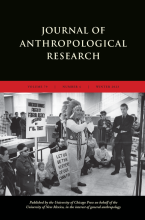Warren Thompson, "Being Seen Is Believing: Evidence and Authority in the Ache Mission Encounter," Journal of Anthropological Research (Pre-print Published online February 19, 2024)
Thompson, Warren. "Being Seen Is Believing: Evidence and Authority in the Ache Mission Encounter." Journal of Anthropological Research. Pre-print Published online February 19, 2024
Cites Thomas F. Torrance, "The Framework of Belief," in Belief in Science and in Christian Life: The Relevance of Michael Polanyi's Thought for Christian Faith and Life, ed. Thomas F. Torrance (Edinburgh: Handsel Press, 1980), 1-27; #1980-374.
"While we may justly criticize 'belief' as a cross-cultural attitude in which people assent to 'irrational beliefs' (Asad 1993), the term is nevertheless indigenous to many forms of Christianity and deserves anthropological attention for that reason. In Christian theology, the primacy of the spoken word over vision has to do with the conviction that the invisible God constitutes the ultimate ground of human knowledge. It is through conviction on that unseen reality—that is to say, 'believing' that what is not directly perceptible is not only real, but transcendent—that human existence is grounded. The ultimate source of knowledge lies outside the one who sees, hears, or otherwise experiences. As Thomas F. Torrance describes it in his essay 'The Framework of Belief,' 'God is believed only on the strength of his own self-revelation, and as through his Word he commands human knowledge on the ground of his own self-evidencing spiritual reality' (Torrance 1998). For Christians, God’s omniscience often has fundamental ethical consequences: the source of existence sets the terms for what people can know. And it concerns how people imagine their social others—human or otherwise—see themselves. In the remainder of this article, I will examine how Ache epistemological claims relate to what did—and didn’t—change in the ethical lives of Ache Christians."
Like many other lowland South American groups described in the literature, Ache give a higher epistemic value to visually experiencing events, a sensibility that some have argued has impeded lasting conversions by Amerindians to Christianity given that the evidentiary practices of the latter can only be expressed through language. In this article, I qualify this idea by showing how the Ache acceptance of the idea of “being seen” by an omnipresent Christian God was able to reconfigure Ache evidentiary practices regarding vision and visual experience. Through a series of Ache conversion narratives recorded in the late 1970s, I show the importance of “being seen” in Ache conversion and how it eventually provided resources for lasting engagements with Christianity—both with and without the surveilling practices of missionaries from the New Tribes Mission.
- 39 views

